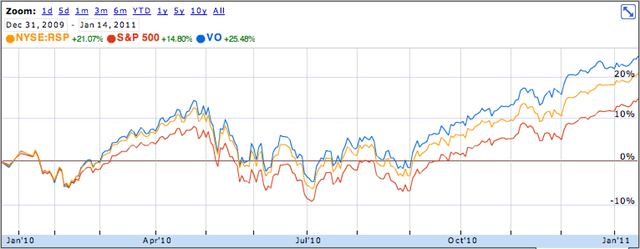SmallCap MidCap Or LargeCap Stocks Which Is A Better Investment
Post on: 31 Май, 2015 No Comment

An investor in the American stock market trying to outperform the overall market by stocks or fund picking would usually have to decide on what size of companies to invest in. When talking about size we usually mean the market-cap: the number of shares outstanding of a company multiplied by the share price. Big companies tend to be less risky than small companies. But smaller companies can often offer more growth potential.
While there is no official breakdown, the division between the large, medium and small cap is approximately as follows:
- Large-cap: $10 billion and greater
- Mid-cap: $1 billion-$10 billion
- Small-cap: $100 million-$1 billion
In the following study, I have compared the performance of the different groups of American stocks according to their size in the current year; future studies will show their performance in different time periods. In addition to the returns by price appreciation, I also looked into the dividends contribution to the total returns and calculated the Sharpe ratio. The Sharpe ratio is a very important indicator to the reward to risk ratio. Following is the definition of Sharpe Ratio by Investopedia (here ):
A ratio developed by Nobel laureate William F. Sharpe to measure risk-adjusted performance. The Sharpe ratio is calculated by subtracting the risk-free rate — such as that of the 10-year U.S. Treasury bond — from the rate of return for a portfolio and dividing the result by the standard deviation of the portfolio returns.
Since the risk-free rate this year is insignificant, I used the adjusted Sharpe Ratio, which is the rate of return divided by the standard deviation of the group returns, ignoring the risk-free rate. Obviously past behavior is not necessarily expected to repeat itself in the future, but nevertheless, studying past performance helps us identify developing trends.
I have chosen the four well known stock indexes of Standard & Poor’s in order to identify the group of stocks according to their size. The four stock indexes are as follows:
S&P SmallCap 600
The S&P SmallCap 600 covers approximately 3% of the domestic equities market. Measuring the small cap segment of the market that is typically renowned for poor trading liquidity and financial instability, the index is designed to be an efficient portfolio of companies that meet specific inclusion criteria to ensure that they are investable and financially viable.














